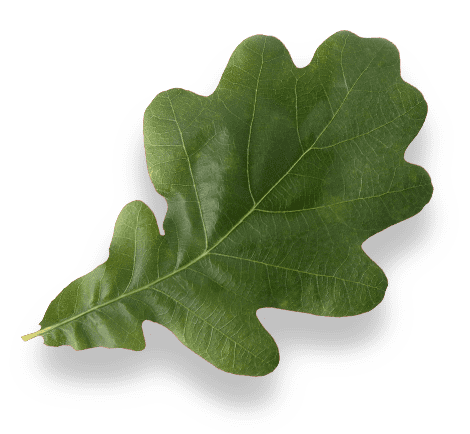12 Step Facilitation Therapy

Power of the Group
According to psychologists, individual treatment is effective, but one of the best ways to change a person’s behavior is to treat individuals facing similar difficulties in a group. Addiction is a chronic illness, not a choice, and recovery from a substance use disorder is a life-long journey. Twelve-step facilitation therapy adheres to this concept and acknowledges that the only real solution is total abstinence, one day at a time.
White Oak Recovery Center heavily integrates 12-step facilitation into treatment and molds the therapy according to each resident. The 12 steps allow residents to reconstruct a plan for a healthier lifestyle and reconfigure a healthier view of the world— living less geared towards expectations and gaining a new paradigm shift of optimism.
What Is 12-Step Facilitation Therapy?
Twelve-step facilitation or TSF therapy is an evidence-based psychotherapy for drug and alcohol addiction treatment. TSF therapy is based on the spiritual belief of a “power greater than ourselves,” defined by each person, and a belief in doing “what works” for the person, meaning doing whatever it takes to avoid using the substance.
Twelve-step facilitation treatment keeps people actively involved in the fellowship of recovery. Each therapy session is highly structured with a specific goal. Participants are asked to keep a personal journal and complete assigned recovery tasks that are to be done in between sessions. Participation and active involvement in the treatment program are considered the most critical factors in maintaining sustained recovery.
History of the 12 Steps
The 12 steps began with Alcoholics Anonymous (AA) in 1935 by the founders of AA, Bill Wilson and Dr. Bob Smith. The 12 steps were published in the “Big Book,” or the “bible” for Alcoholics Anonymous, quickly becoming the foundation of addiction treatment.
Today, Narcotics Anonymous (NA), Cocaine Anonymous (CA), Heroin Anonymous (HA), Sexaholics Anonymous (SA), Gamblers Anonymous (GA), and Food Addicts in Recovery Anonymous (FA) all provide a 12-step approach to recovery based on the effectiveness of the original AA model.
What Are the 12 Steps?
The twelve steps are guiding fundamentals in substance abuse treatment. These are the 12 steps of Narcotic Anonymous (NA) adapted from the original 12 steps of Alcoholics Anonymous (AA):
Step1
We admitted we were powerless over our addiction, that our lives had become unmanageable.
Step2
We came to believe that a Power greater than ourselves could restore us to sanity.
Step3
We made a decision to turn our will and our lives over to the care of God as we understood Him.
Step4
We made a searching and fearless moral inventory of ourselves.
Step5
We admitted to God, to ourselves, and to another human being the exact nature of our wrongs.
Step6
We were entirely ready to have God remove all these defects of character.
Step7
We humbly asked Him to remove our shortcomings.
Step8
We made a list of all persons we had harmed, and became willing to make amends to them all.
Step9
We made direct amends to such people wherever possible, except when to do so would injure them or others.
Step10
We continued to take personal inventory and when we were wrong promptly admitted it.
Step11
We sought through prayer and meditation to improve our conscious contact with God as we understood Him, praying only for knowledge of His will for us and the power to carry that out.
Step12
Having had a spiritual awakening as the result of these steps, we tried to carry this message to addicts, and to practice these principles in all our affairs.
The Five Core Concepts of 12-Step Facilitation Therapy
The five key 12-step facilitation therapy concepts of drug addiction are:
- Introduction and assessment – the therapist introduces the established view of drug abuse and dependence as recovery being the only option and evaluates your level of drug use, motivation for change, and commitment to abstinence
- Acceptance – understanding that you are powerless over your addiction, and it is unmanageable
- People, Places, and Things (Habits and Routines) – identifying the people, places, and things that are dangerous to your recovery and developing a plan to make a lifestyle change
- Surender – allowing something or someone to help your recovery by taking on the responsibility of looking for a beneficial opportunity yourself
- Getting Active in 12-step programs – following the suggestions of what has worked the best for others battling addiction and getting involved in the 12-step program
How Do the 12 Steps Work?
Project Match was a five-year clinical study done by the National Institute on Alcohol Abuse and Alcoholism (NIAAA) to test drug treatment therapies on alcohol dependence. The large-scale trial found that no single treatment has been shown to be effective for all individuals diagnosed with an alcohol or drug addiction. More than 1,700 individuals were treated with one of three drug treatment therapies: cognitive-behavioral therapy (CBT), motivational enhancement theory (MET), and twelve-step facilitation therapy (TSF).
Ultimately, the conclusion was that those who participated in 12-step facilitation were more likely to stay entirely abstinent. However, almost all participants in Project MATCH demonstrated decreased drug use, depression, and reduced substance-related problems during the 12 months after treatment.
Twelve-step facilitation offers easily accessible and no-cost resources for people suffering from substance use disorders and mental health conditions. The concepts of the 12 steps allow you to see your addiction as a symptom of an illness and provide a reliable, compassionate support system that empowers you to maintain your sobriety.









